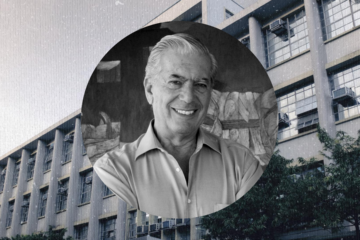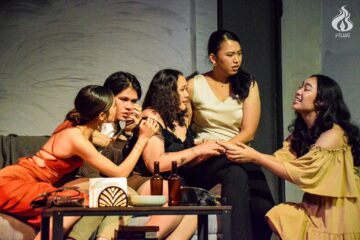By CORHEINNE JOYCE B. COLENDRES

FOR THE last chanter of their tribe, Ramon Navarro (Romulo Caballero) considers chanting to be beyond telling the story of a great epic, and merely keeping up with his tribe’s tradition. Chanting has evolved to become a means of preservation for their tribe’s entire history. Despite his old age, Ramon perseveres to pass down the Sugidanon epic to the next generation through actively recording the epics from his memory and teaching the chants to the children from their neighborhood.
As he nears the end of his final book of chants, Ramon starts to show the worsening signs of dementia. The responsibility of cultural preservation soon falls down to his granddaughter, Sarah Mae (Jally Nae Gilbaliga), a young and carefree teenager who is knee-deep involved in the generation’s current trends.
The Chanters draw its charm from the unlikely grandfather and granddaughter duo who meets halfway despite their differences. Ramon and Sarah Mae projects a balance between two different generations; Ramon tries to become more involved with Sarah Mae’s interests—through a scene where he chants the musical score of Sarah Mae’s favorite soap opera. Likewise, Sarah Mae diligently studies and practices chanting the Sugidanon epic—a story about ancient powerful noblemen, demigods, and other mythical creatures—which she will perform alongside her friends—for the arrival of a celebrity in their little village.
Through featuring the Sugidanon epic, the film becomes commendable for its excellent take on cultural pride. Set in Iloilo, and with a consistent Hiligaynon dialogue, The Chanters highlight the rawness of the life of a small and simple family in the province. This concept is further expressed through the film’s small screen projection, which may be associated with how contained, and limited is the world that the characters lived in—yet there is something more beyond the screen that enticed the audience to find out.
Directed by James Robin Mayo, and an entry to the QCinema Film Festival 2017, The Chanters becomes hauntingly beautiful through its elaborate use of literature. All throughout the film, the chants are not subtitled, unlike the entire dialogue. A dreamy sequence soon unfolds—featuring sceneries of the people in the characters’ village, accompanied by Sarah Mae’s voice, chanting the story of the great epic—effectively sends a quiver down the audience’s spine. Because while the voice-over of the chant plays, the audience finally understands Ramon’s explanation as to why chanting is not about simply telling a story of a great epic. Instead, it is a form of legacy—that according to Ramon, a legacy that is important to their tribe and to their people, a legacy that is meant to be passed down, so they may never be forgotten. F



